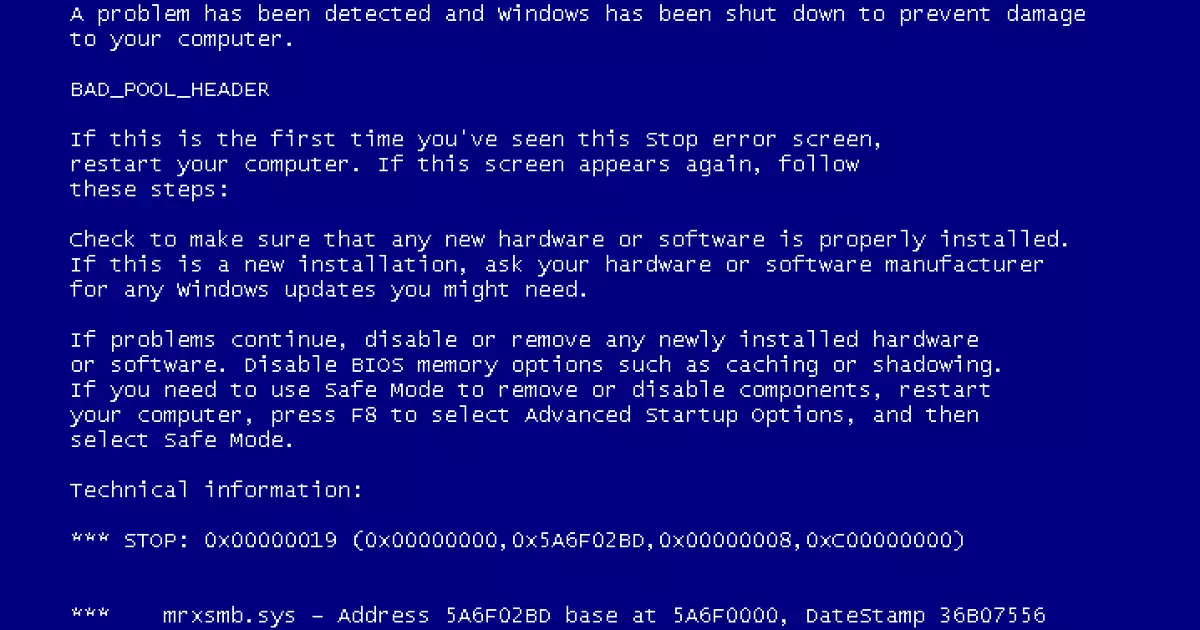Imagine a chilly evening at the Reading music festival, where the magical atmosphere suddenly transforms into a chorus of indignation. Campers, nestled in their sleeping bags, join a vocal symphony—shouting “bollocks” in a rhythmic wave. It’s a moment that resonates deeply with anyone who has experienced the frustration of a shared setback. In a digital age where technology defines our everyday lives, such experiences are common and relatable, echoing across devices and networks, much like these festival-goers uniting in their lament.
Recently, this spirit of collective frustration has manifested in a peculiar way through the infamous “Blue Screen of Death” (BSOD), a term that has transcended mere computer malfunction to become a cultural icon. Microsoft’s recent announcement of revamping the BSOD into a sleek Black Screen of Death (BlackSOD) aims to clarify the errors users encounter, but it also highlights a striking evolution in how we approach technology and its failures. We share in these irritating moments, almost forming a digital community around our collective exasperation.
From Folklore to Design
Microsoft declared that the reimagined BlackSOD would not just be a cosmetic makeover; it intended to provide clearer information about system failures and potential fixes. David Weston, the company’s VP of enterprise and OS security, emphasized the importance of clarity in times of digital chaos. Interestingly, this transition signifies a shift in corporate perspective—recognizing that resilience and adaptability in technology are essential components in today’s fast-paced world. As more organizations lean toward preventative measures and troubleshooting, Microsoft aims to ensure that users are less likely to be left in the dark when something goes awry.
But does this redesign accurately capture the feeling of despair that the traditional BSOD encapsulated? The BSOD, with its eerie blue screen and cryptic messages, evoked a unique sensation of shared distress. Users worldwide knew that they were not alone in their tech-related tribulations; each crash murmured tales of frustration and hopelessness familiar to all. By replacing it with a more informative black screen, Microsoft may be eliminating a cultural touchstone, diluting the connection we share amid our digital failures.
Revisiting Tech Culture
The BSOD’s replacement brings to mind other notorious symbols of technological despair, such as the malfunctioning Xbox 360’s “red ring of death” or the Mac’s infamous “Sad Mac” icon. Each of these visuals conjures a specific memory, a moment of anguish that many users have encountered. The transition from the blue hue of impending doom to a more sanitized black experience strips away some of that shared linguistic power—whether it’s the collective gasp, the inevitable eye-roll, or the laughter that follows these frustrating moments.
Moreover, the broader implications of these tech failures reveal an uncomfortable reality. As our lives become increasingly intertwined with technology, these mini-crises highlight our dependence on devices that we often take for granted. When companies like Microsoft announce layoffs or engage in military partnerships, it filters into the societal backdrop that influences consumer perception. Microsoft’s recent decision to supply AI technology for military applications in Gaza generates additional frustration and concern, further complicating the narrative of humanizing technology and building trust.
The Future of Digital Community
As we journey deeper into the digital age, perhaps what needs examination is not merely a screen’s redesign but the community it fosters during moments of crisis. As technology evolves, so too should our response to its failures. Will we continue to embrace the humor and camaraderie found in shared frustration? Or will the more clinical approaches to errors further isolate us from the unifying nature of technology’s quirks?
Ultimately, the reintroduction of a tech mishap like the BlackSOD raises crucial questions about our relationship with technology, blending nostalgia with contemporary concerns. Are we prepared to accept a world where such pivotal moments of shared dread are smoothed over? As we face a future of ever-evolving technology, let us not lose sight of the bond forged in those collective sighs of exasperation, emblematic of not only a screen glitch but our shared humanity within this digital landscape.

